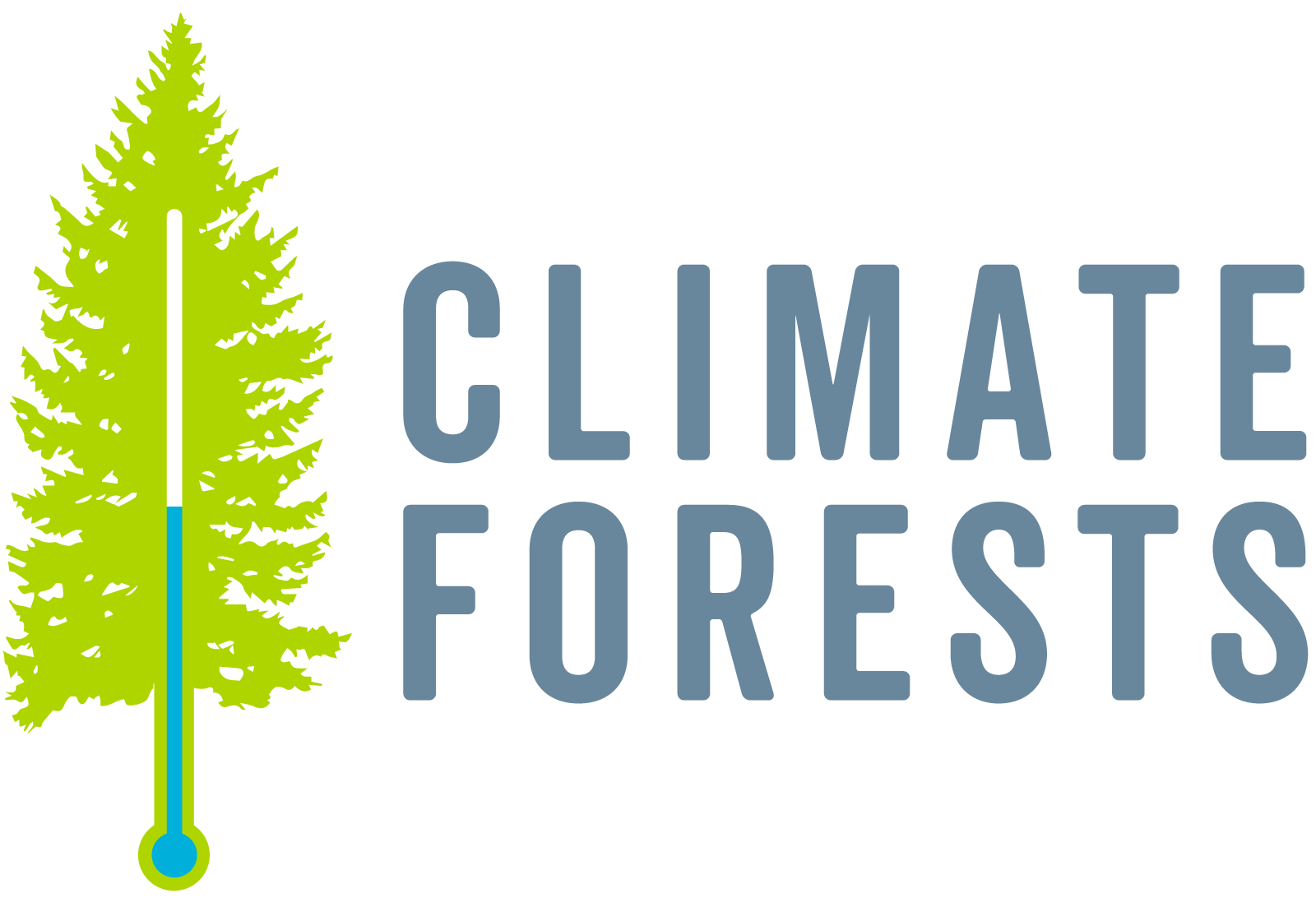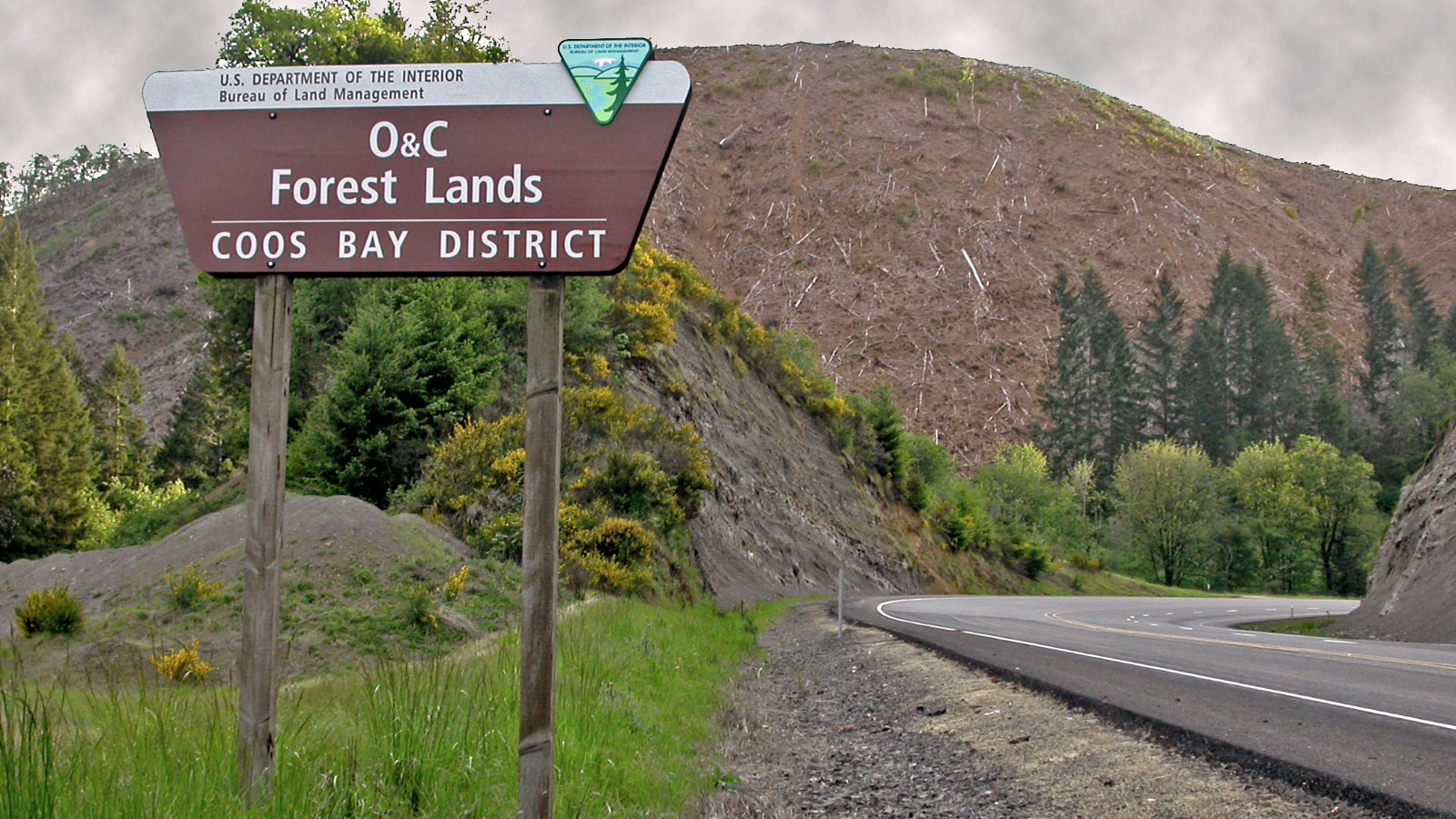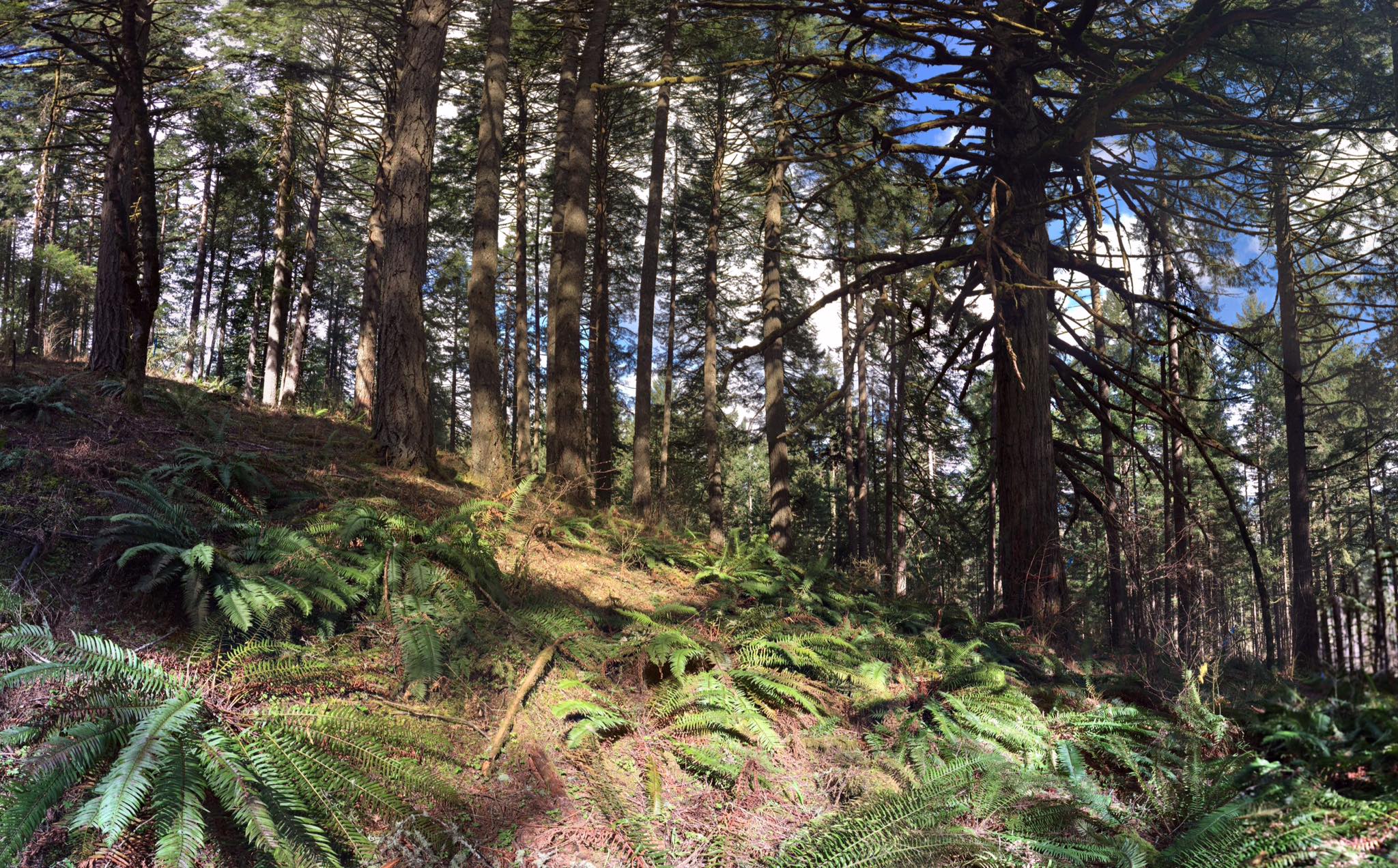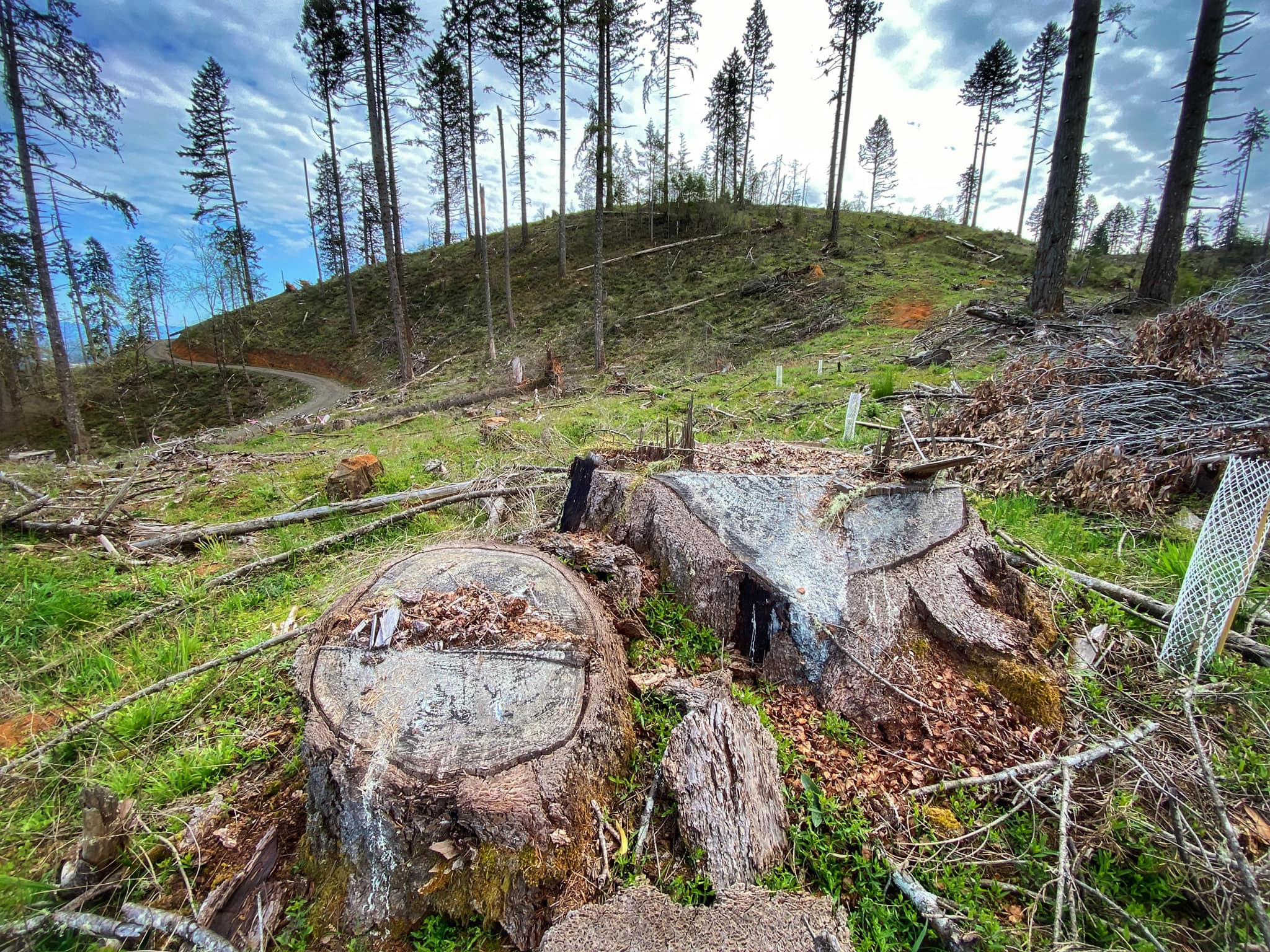On Earth Day 2022, President Joe Biden signed an executive order to protect important but overlooked partners in the fight against climate change: mature and old-growth forests that sequester carbon, without charging a dime.
It came as a major relief to advocates, after four years of conservation rollbacks and climate science manipulation under President Donald Trump, which encouraged aggressive logging. Mature and old-growth trees provide essential ecosystems for the many organisms living within and beneath them, and protect the water quality of nearby communities, lakes, and streams by preventing erosion. They also fix nitrogen, which improves soil quality and ensures the health of the whole forest.
Due to centuries of logging, most of these older trees are now only found on federal lands. Executive Order 14072 directed the Department of Interior and the Department of Agriculture to define and inventory mature and old-growth forests on federal lands — those having taken generations to develop — and then to craft new policies to protect them.
But in spite of Biden’s recent commitment, federal agencies continue to move dozens of logging projects forward in federal forests across the United States, putting over 300,000 acres at risk, according to a recent report by non-profit group, Climate Forests. Lauren Anderson, climate forest program manager for the conservation group Oregon Wild, said that’s in part due to a glaring omission in the Biden administration’s executive order. “It did not highlight logging as a threat,” Anderson said.
Before (left) and after (right) photos from a Bureau of Land Management timber sale at Nails Creek near Cheshire, Oregon. Doug Heiken
As a result, chopping and hauling out mature and old-growth trees in critical ecosystems across the U.S. continues while the federal government works on counting what’s growing where. Swaths of bigleaf maples and Douglas firs in Oregon’s Rogue-Umpqua Divide, are among those recently axed, or marked to be logged any day now. The Bureau of Land Management (BLM) Poor Windy Project in southwest Oregon contains 4,573 acres of mature and old-growth stands held in public trust—that are now being sold to timber companies. They’re some of the most carbon rich forests in the world, home to black bears and northern spotted owls.
Joseph Vaile, climate program director at Klamath Siskiyou Wildlands Center, says protecting these remaining elders couldn’t be more urgent. “In a lot of places, they’re [already] gone,” Vaile says.
BLM’s support for logging in these kinds of forests dates back to the 1930’s. The Oregon and California Revested Lands Sustained Yield Management Act placed over two million acres under the agency’s control, with the aim of ensuring the perpetual flow of timber for wood products.
But Vaile says the law’s objective, and the agency culture it codified, is outdated. “Since then, our economy and our social structures have completely transitioned away from an old-growth logging economy to a more diversified economy,” he says. “Instead of going after old-growth trees, what we should be doing is protecting people from fire, adapting these forests to climate change, and protecting water sources.”
It’s a nationwide problem. Timber sales are also underway in a 12,000 acre patch of the Chequamegon-Nicolet National Forest known as the Fourmile Vegetation Project, in Wisconsin’s Northwoods. Here, lichen-draped upland hardwoods mingle with red pines and aspens, creating a rich habitat for moose and endangered gray wolves. Though much of the landscape is still recovering from continuous logging, over half of the trees are 80 years and older; and a third are centenarians.
These mature and old-growth trees store more carbon than younger trees, so it’s imperative that we protect them, says Carolyn Ramírez, staff scientist with the Natural Resources Defense Council. “We can’t just cut them down and replant them and expect to have a net-zero carbon impact. It will take decades for that carbon to be restored in these forests, as well as all the myriad ecological benefits that leaving the trees provides,” Ramírez says. One mature tree can remove over 48 pounds of carbon dioxide from the atmosphere over the course of a year. The majority of that carbon-sequestering capacity occurs in the second half of a tree’s life, researchers have learned.
Ramírez visited Chequamegon-Nicolet National Forest in October, where further timber sales are currently underway. The difference in ecological diversity and surface temperature between areas where mature trees still grew, and others where the Forest Service had recently logged was “jarring,” Ramírez said. In addition to other ecosystem services, forests provide cooler microclimates for those nearby, which is significant in and of itself in a rapidly-warming world.
In response to a 2021 request by environmental groups to suspend and review operations at the Fourmile Vegetation Project on the grounds that continued logging there was at odds with national objectives on the climate crisis, Forest Service Chief Randy Moore wrote that the project would: “maintain or enhance existing forest research studies; contribute toward fulfilling demand for wood products; provide a safe and effective road system; increase public safety related to wildfire potential; and maintain or enhance recreation experiences.”
But Andy Olsen, a senior policy advocate for the Environmental Law & Policy Center, said those arguments don’t add up. For instance, the old trees harvested from the area are currently slated to be sold as pulpwood, for things like paper and plywood. In other words, mature and old-growth trees logged as part of this project will be ground down into a low-value timber product that could just as easily be produced by younger trees, grown on plantations that store less carbon and don’t serve as keystones to their ecosystems—which the Forest Service has plenty of, Olsen says. “They’re choosing to rush forward with these sales of very important lands. Why these forests, why now?” he said.
Other elements of the Forest Service’s justification are problematic as well. For example, older trees are actually more resistant to wildfires than younger ones. The ongoing timber sales are also at odds with the Biden administration’s global climate commitments, Olsen added, such as seeking to protect 30 percent of U.S. lands and waters by 2030.
Federal agencies have until Earth Day 2023 to define mature and old-growth forests, and to complete their inventory. As of this writing, over 130,000 people have submitted public comments urging the Department of Interior and the Department of Agriculture to set this definition at “80 years and older;” and a coalition of environmental groups is pushing for those agencies to propose what some advocates refer to as a “golden rule” for logging—one that would explicitly prohibit the logging of trees defined as mature and old-growth, given their unique carbon-capturing and biodiversity-protecting powers.
In the meantime, in an attempt to protect thousands of acres of majestic trees, groups including the Great Lakes Indian Fish & Wildlife Commission (GLIFWC) are also urging the Biden administration to pause logging in areas of concern—many of which are on tribal lands—until the inventory is complete. As Michael J. Isham, executive administrator for the GLIFWC wrote to the Forest Service in August 2022, doing so would help “to ensure that future generations of Ojibwe people can continue their Treaty protected relationship with all natural beings.”
Earlier this year, academic researchers published the first study to comprehensively map mature and old-growth forests in the U.S. Advocates say these maps, in support of the government’s inventory could usher in a new approach to forestry—one where trees are treated as venerable colleagues in the fight against the climate crisis.
Anderson, of Oregon Wild, added that currently, there’s no technology capable of pulling carbon out of the atmosphere at the scale that mature and old-growth trees can. “Getting forest managers to really think about old-growth trees the same way that other states think about [renewable technologies like] solar panels and wind turbines is the culture shift that needs to happen,” she said.
The Climate Forests Coalition works to protect mature and old-growth trees and forests from logging across America’s public lands as a cornerstone of U.S. climate policy.






